Choosing to Care
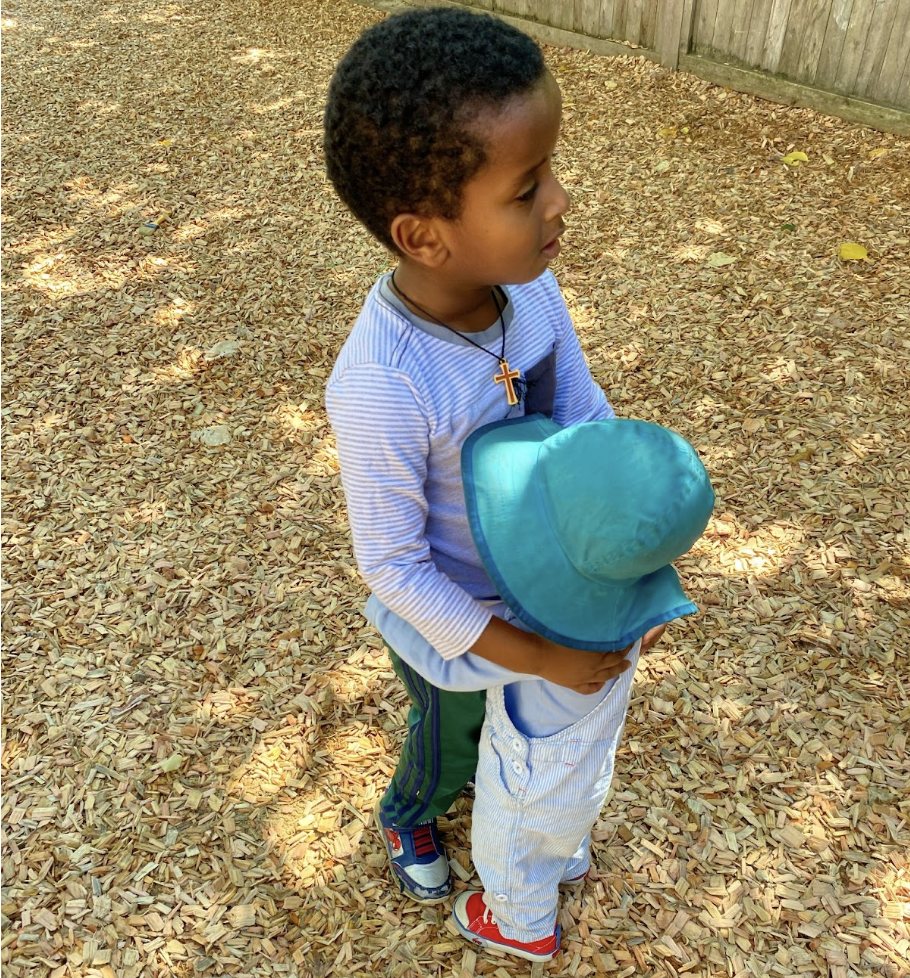
In a time when educational discourse is increasingly shaped by ideals of efficiency and optimization—and the world faces rising authoritarianism and dehumanization—choosing to care is not only pedagogically meaningful, but also politically urgent.
-Carmelo Presicce, LifeLong Kindergarten at the MIT Media Lab
Children choosing to care
Children are biologically programmed to attach to close family members. So it is not surprising when a young child, at the start of the school year, is upset at the absence of these caregivers.
It is the second day of school and Caleb is sad. While he has been to Newtowne School before to drop off and pick up his older brother, this is the first time he's been left in group care without a parent. Out on the playground with his fellow Orange Sea Stars (the toddlers) and the Green Dragonflies (the four and five-year-olds) he softly calls for his mom.
Perhaps suspecting there is little they can do for him, most of the children ignore him. The teachers, who have been comforting Caleb for several hours, give him a little space.
Philip, on the other hand, is paying attention. He is friends with Caleb's older brother and Phillip and his younger sister CC (also an Orange Sea Star) have had playdates with Caleb. I am chatting with Phillip as Caleb walks by. Phillip tells me:
I’m going to ask CC again to take care of Caleb because every time I try to calm him down he cries for his mom.
Not a bad strategy. Who would know better how to help a toddler than a fellow toddler.
Nathan, who also knows Caleb through his older brother, takes a more direct approach. He gives Caleb a long and reciprocated hug.
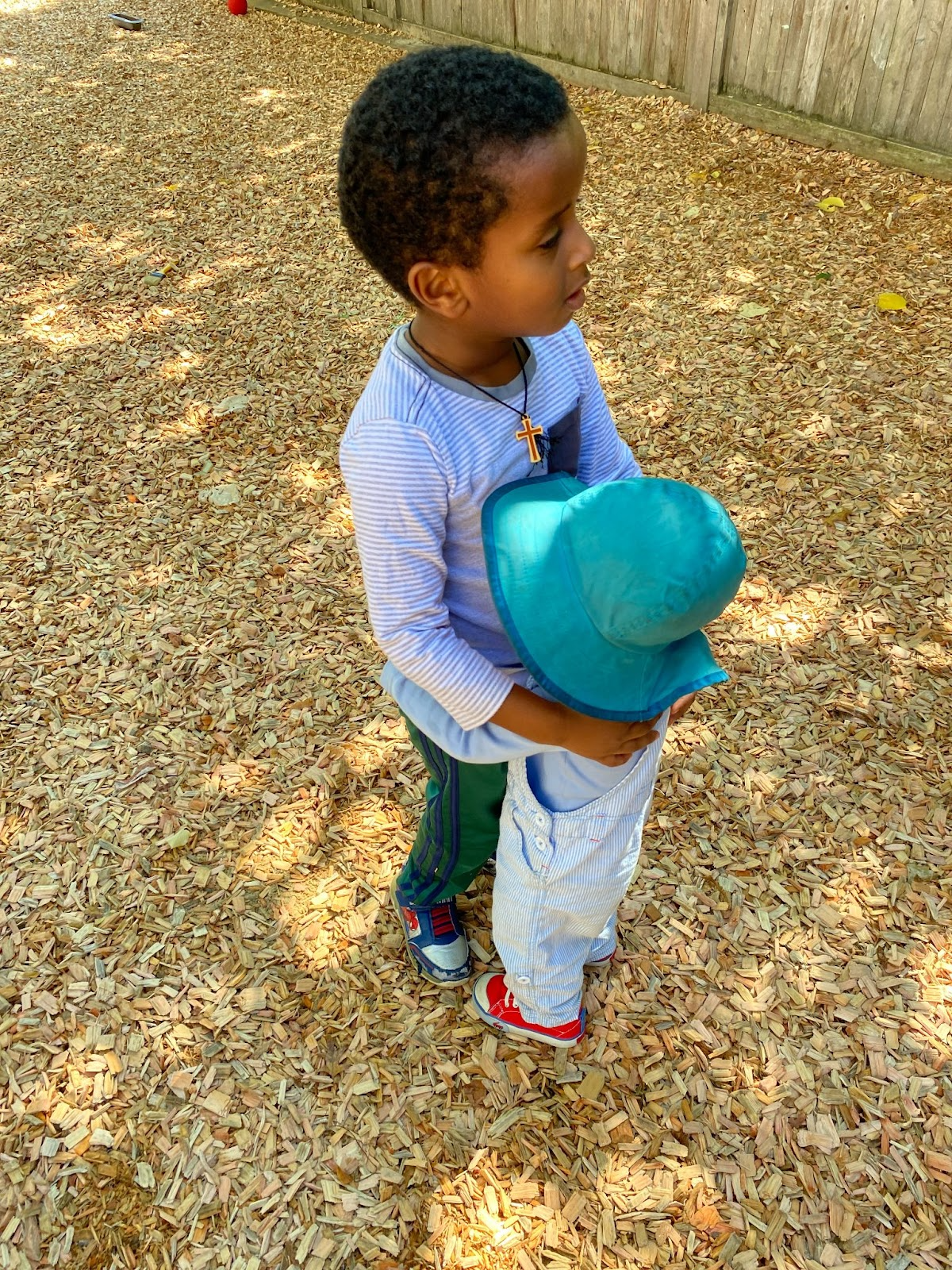
Phillip and Nathan have chosen to care.
Why care
Over the past few years I have found myself thinking a lot about care. A lot. Part of my obsession stems from my goal of fostering children’s solidarity with the rest of the natural world. I want the kids I teach to know, be excited about, and come to love the ecosystem that they are a part of. I want them to care about the plants, animals, and other beings that we share our world with.
Politics also has had me thinking about care. For years my colleagues and I have advocated for educational experiences that foster creativity, collaboration, and critical thinking. Yet great harm is being wrought by creative, collaborative groups that operate with deliberate cruelty.
And it is not just those intent on doing harm; sometimes it is simply the absence of care. I have heard too many stories, and had my own experiences, with organizations that, while not mean-spirited, can best described as careless. Often these organizations have lovely mission statements and are practiced at signaling wonderful intentions. But when the rubber hits the road, there is an absence of care.
In this essay, I discuss the importance of choosing to care. I give a working definition of care and argue that care is a cognitively complex practice. I also share stories from two caring organizations: Newtowne School, and LifeLong Kindergarten at the MIT Media Lab.
Newtowne School, where care is an end
The story of Phillip, Nathan, and Caleb is just one of many examples of caring at Newtowne from the first days of school. Teachers caring for children. Teachers caring for families. Families supporting each other. Teachers helping each other out. With hugs, smiles, and kind words, children caring for their teachers.
Here is one of these stories. It is the end of the first day of school. The children have gone home and the faculty has gathered on the playground. Following a school tradition, we are eating ice cream and recounting how the first day went.
Along with ice cream, our director Caitlin Malloy has brought out “The Blobs,” a poster with figures numbered one through twenty which represent different emotions. She asks us to pick a figure that captures the experiences of a child (or children) during the day.
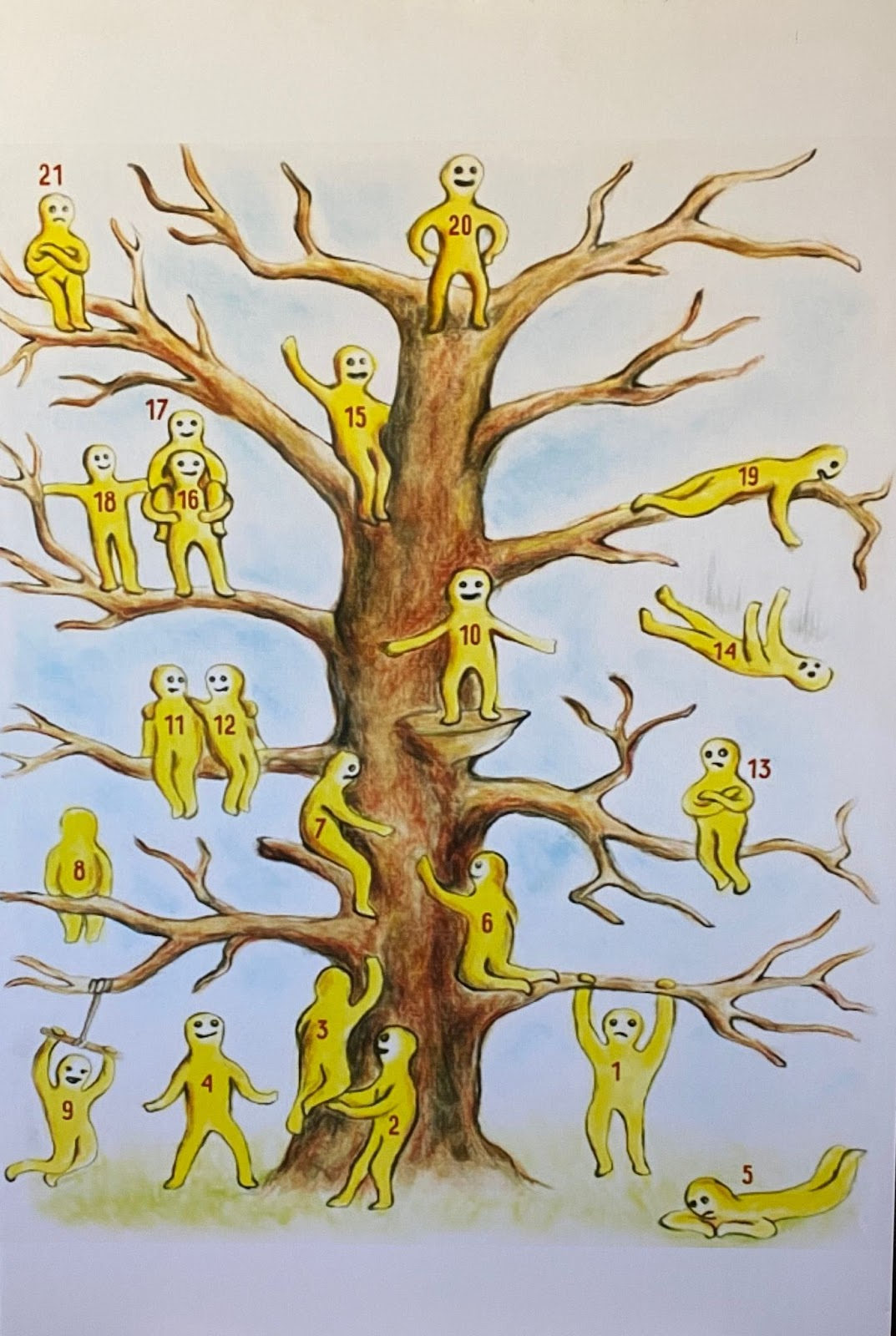
We hear of four-year-olds Eli and Finlay who were numbers 11 and 12; so happy to be reunited after a summer apart. We find out Nathan was a number 15, welcoming his friends into their new classroom. Ethan was a 2, literally helping other children onto the monkey bars.
As my colleagues share I am struck by their attentiveness and interest in the children. That these moments were noticed during the hustle and bustle of the first day of school is a clear indication of my colleagues' care for children–their attention, respect, and presence for their new students.
Then there was the care that went into preparing the gathering itself. Caitlin and the leadership team had thought through what would be a meaningful and grounding experience after what is always an exhausting day. The Blobs offered a playful way to share. And ice cream at a staff meeting! At Newtowne, we (the faculty) are cared for.
Over the course of the year, there will be exciting curricula at Newtowne School. Using past years as a guide, the five-year-olds may create their own podcast, the four-year-olds may map out hiking routes in a nearby park, the three-year-olds might conduct an experiment about what urban birds like to eat, and the two-year-olds may explore light and shadow. Or, there may be things that are completely new and different.
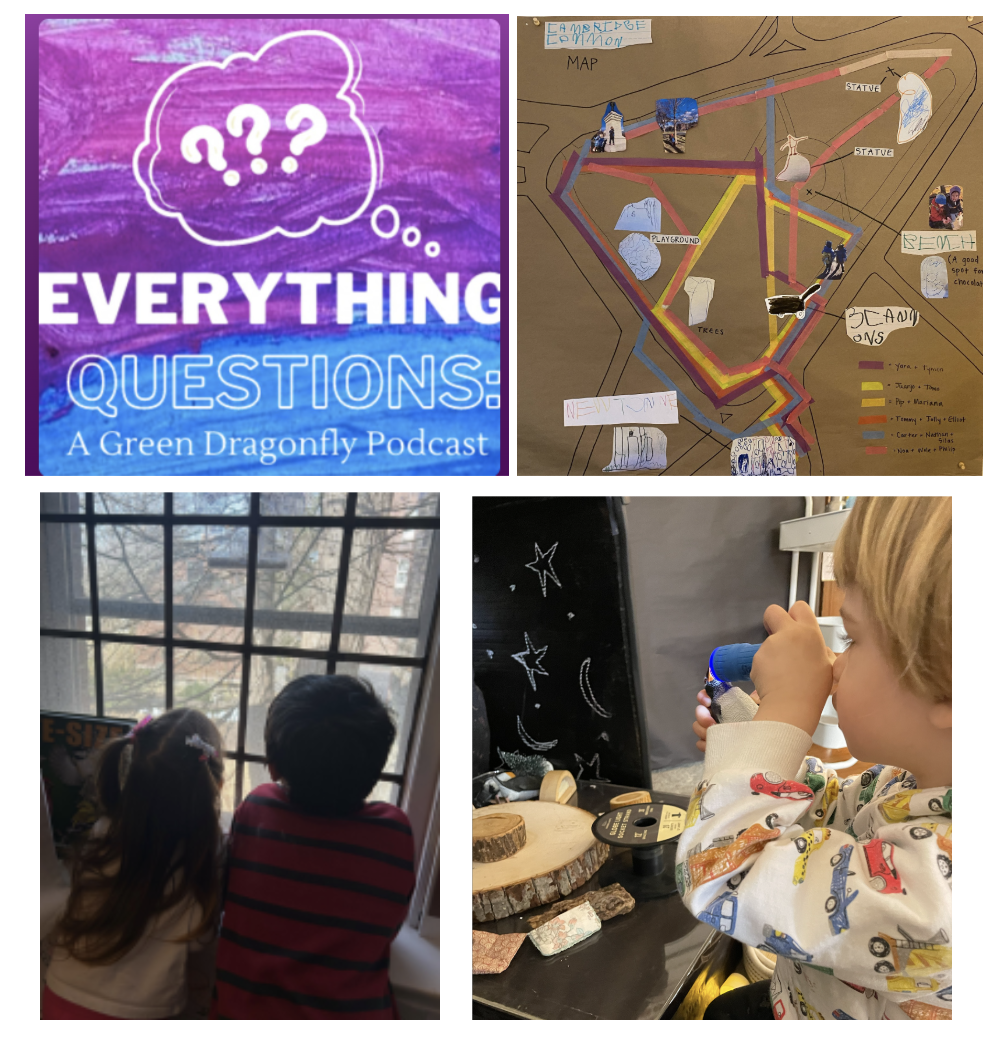
Either way, care will be central to whatever emerges: how we take care of each other, our environment, our neighbors, and the critters around us. Care is more than a means to an end. At Newtowne, relationships and the care they embody are an end in themselves.
What I talk about when I talk about care
The stories of Phillip, Nathan and Caleb, and the ice cream staff meeting are examples of care. In both cases, there is interest and concern. People are looking after one another and providing for their needs.
My friend Junlei Li has thought deeply about care. I asked him what he thinks is at the heart of care; what the active ingredient is. His short answer: being in relationship with! His longer answer:
My first instinct is to say “relationships”, and then I thought, yes it is, but it’s not enough to just say “relationships.” What kind of relationships? It would be a kind of relationship that values “being with” as much (perhaps even more) than “helping” while not excluding “helping” or “caregiving.” It’s the “being with” that reduces the distance that often comes from being a professional helper or “fixer”...Helping is actually accomplished or at least finds its foundation in “being with” – that’s true for doctor-patients, teacher-students, or even among friends and families… I think about how someone like Jane Goodall cares for the chimpanzees or the forests – it is so much “being with”.
The care Junlei describes is active. It is ethical. It involves listening, being present, and taking preferences and ideas seriously (something particularly important with young children as their ideas are too often ignored or dismissed). It involves creativity and, as I argue next, is a cognitively complex practice.
A cognitively complex practice
While the blob poster and ice cream perked us up, my colleagues and I were tired after the first day of school. Exhausted, really. Forming caring relationships with a new group of children and their families is hard work, physically, emotionally, and cognitively.
This is not how care is often described. Doesn’t it just come naturally? Isn’t it an inborn and feminine characteristic? Care is a soft skill.
There is nothing soft about care when it comes to the brain; care is hard-wired. A supporting piece of research: in gay couples with a new baby, the primary caretaker (the partner who stays home with their infant,) shows similar hormonal and neurological changes as new mothers. Marian Bakermans-Kranenburg, a neurologist at Leiden University, explains that when it comes to care “You are what you do.” In other words, the practice of caring shapes your brain and you get better at caring.
Just as it takes practice to get good at the violin, soccer, or Go, it takes practice to get good at care. One needs to be good at listening and be able to read the needs of others. It can require navigating between competing needs, among individuals and within an individual. In his dissertation that explores the online course Learning Creative Learning, Carmelo Presicce shares the stories of three master facilitators as they navigate the complexity of care. They make decisions on when to support individuals’ curiosities, skill development, and connections to the group. Conversations among the facilitators help them hone their craft as they strive to care.
LifeLong Kindergarten where care is at the center
For the past couple of years I have been a research affiliate at LifeLong Kindergarten (LLK), a research group at the MIT Media Lab. LLK is best known for Scratch, a visual programming language used by millions of young people worldwide. Some friends and colleagues, knowing my lack of tech skills, are surprised about my affiliation with LLK. I am a bit surprised too. What is my connection to LLK? Care.
Here is the story. In the spring of 2023, I was searching for a new academic home. I knew my practitioner-research would benefit from a university library. Also, the best swimming pools in Cambridge are at institutions of higher education. I had arranged a meeting with folk at LLK to share the Pedagogy of Play book that my team at Project Zero had just published. On the theory that folks can’t say yes if you don’t ask, at the meeting with Mitch Resnick, Natilie Rusk, and Rupal Jain I asked if I could be a research affiliate. I acknowledged that I had no expertise in programming, but felt we shared a perspective of teaching and learning. I added that I admired the caring community folks at LLK had created. Rupul responded that while computation is central to LLK’s mission, creating a caring community was even more important to them. That fall I became a research affiliate at LLK.
Rupal’s comment was not an off-the-cuff remark. Coming out of the pandemic and surveying the world where AI was playing an increasingly large role, the folks at LLK had had numerous discussions about what should guide their work. Among the human characteristics they wanted to promote was care.
Now having seen the LLK community in action for several years I know the mention of care is more than rhetoric. Here is an example bestowed on me. I occasionally zoom into LLK’s weekly group meeting. Along with a check-in from everyone present, there is often a presentation. During one session LLKer Teo Xisto shared about their aquarium filled with snails. Seeing the setup, I thought: the kids at Newtowne would love this. I asked if Teo might give me some advice about setting up a tank. Teo provided amazing advice and more. They visited Newtowne multiple times to help with the setup, and gifted us snails, shrimp, and aquatic plants. Once the tank was set up, they answered children’s questions about snails via email and in person. The children love watching the snails glide across the tank and enjoy trying to find those elusive shrimp.
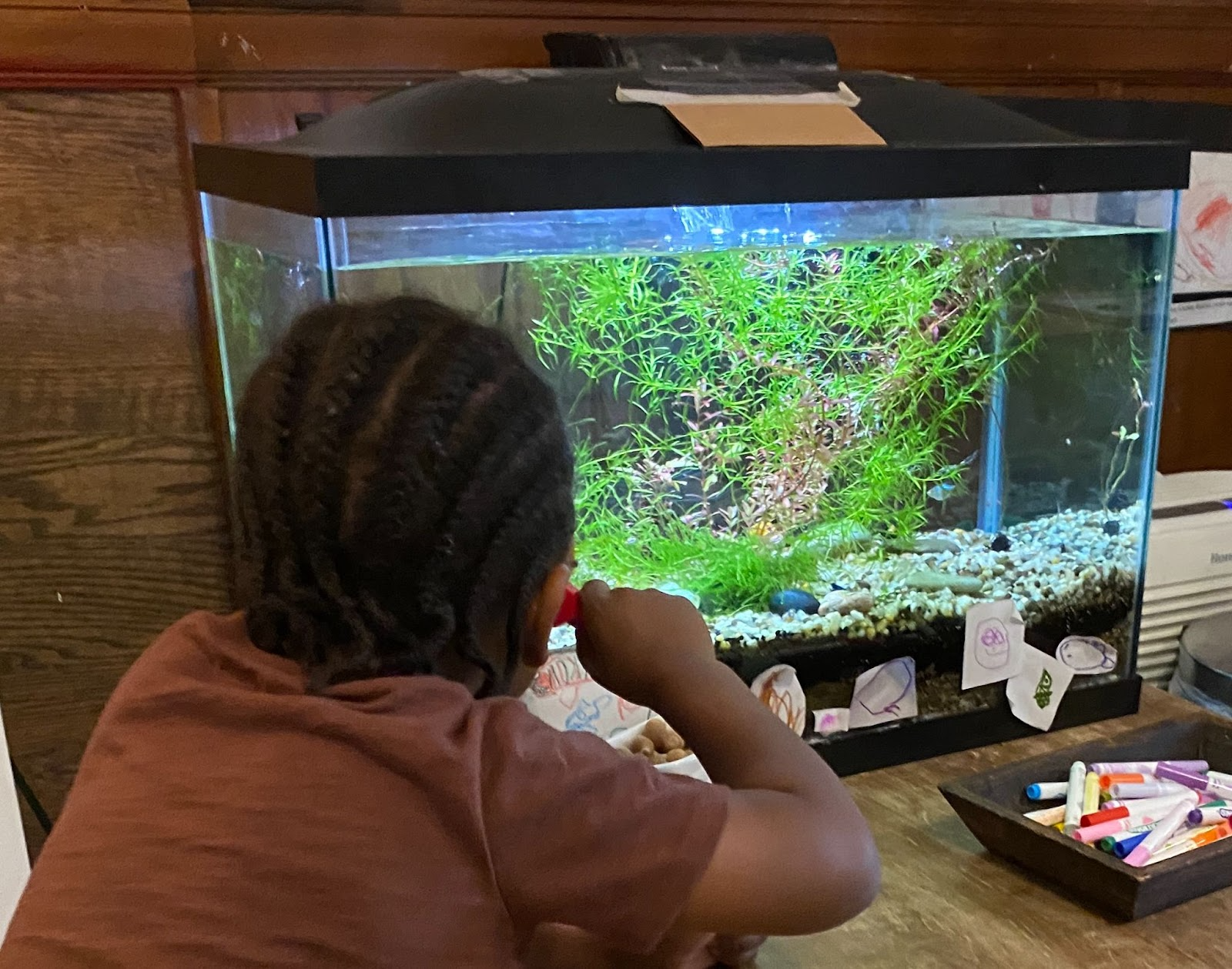
Unexpected, amazing, and this is what folks at LLK do. They help each other out. They care.
Newtowne School and LifeLong Kindergarten. Places of care. While the organizations are made up of caring individuals, I am convinced that the culture of each place promotes care. Of course, leadership is important and the leaders and LLK and Newtowne can best be described as mensches (Yiddish for decent, responsible, caring people). And it goes beyond the leaders. Each member of the group contributes to making these places attentive to the needs of others–insiders and guests alike. At Newtowne and LLK, caring is a team sport.
Questions about care and thanks
There is much more to be said about care. My Remake co-editor Amos Blanton finds in the examples in this essay, “a kind of humility in that the care-er doesn't need to have any immediate payback.” Such caring is often undermined by the optimization pressures and transactional nature of capitalism. Indeed. I sadly find LLK and Newtowne counter-cultural in their relationship to care. Still, they exist. What are the conditions that allow organizations to choose to care?
This year at Newtowne we are exploring what it means to nature strengths in children, families and our community. Strength is often seen as the same as power. But what is the role of caring in creating a strong and resilient school?
Junlei observes that while human beings have an impulse to care, they also can have an impulse to turn away from care. In a world with so much to care about–billions of people, countless species of plants and animals, rivers, oceans, and wetlands–perhaps this is unavoidable. Still, what kind of social structures and socialization practices could a society have to ensure everyone and everything is cared for?
Big questions to be sure. For now, I will end by saying how grateful I am to be surrounded by colleagues who choose to care.
Thanks to Liz Merrill, Amos Blanton, and Caitlin Malloy for their careful read of previous drafts of this essay.
I’m pleased to report that, a month into school, Caleb has found his place at Newtowne. He comes to school happily and has made new friends. Phillip and Nathan continue to keep an eye on him, playing hide and seek with him, and bestowing an occasional hug.
